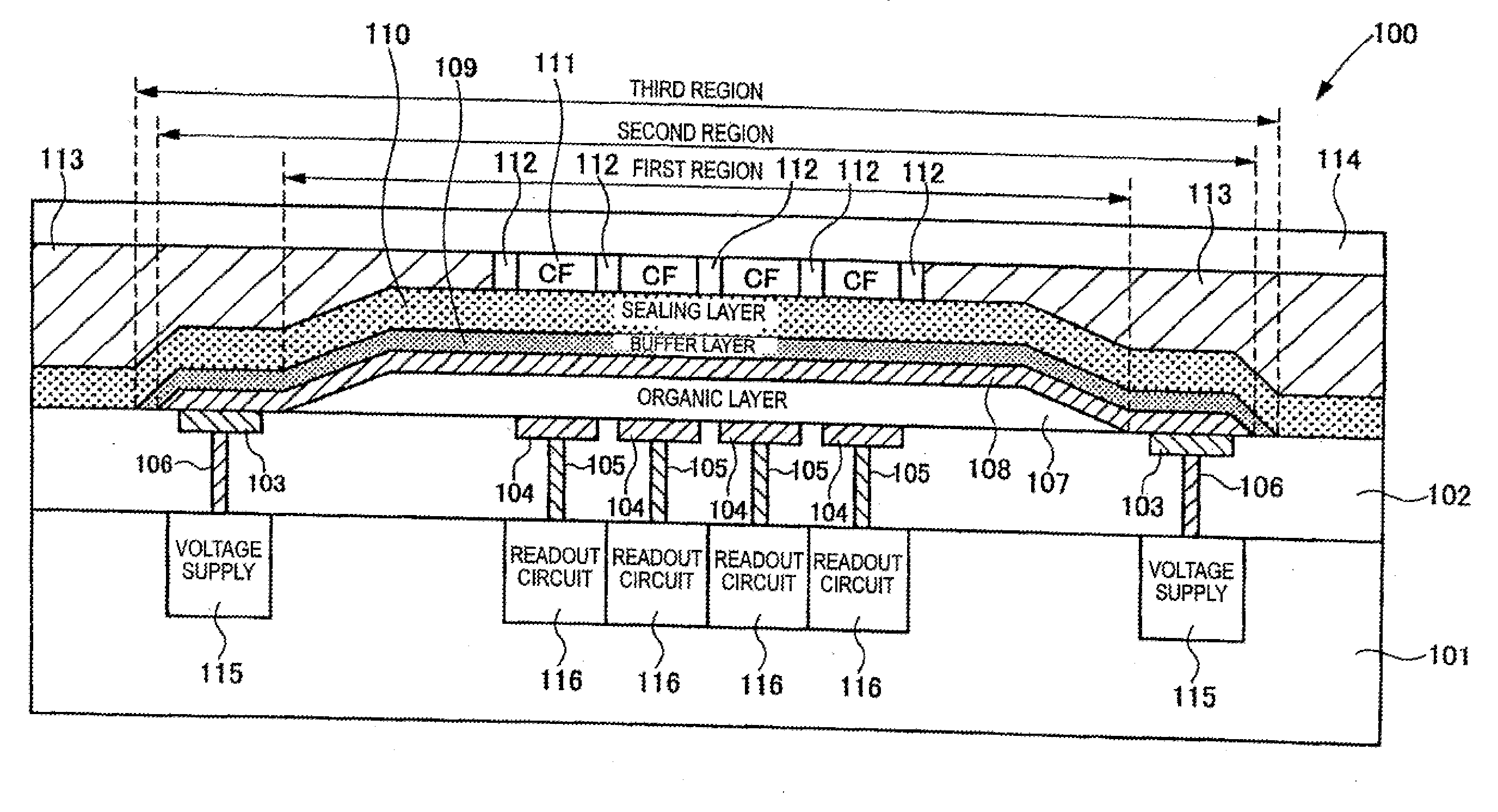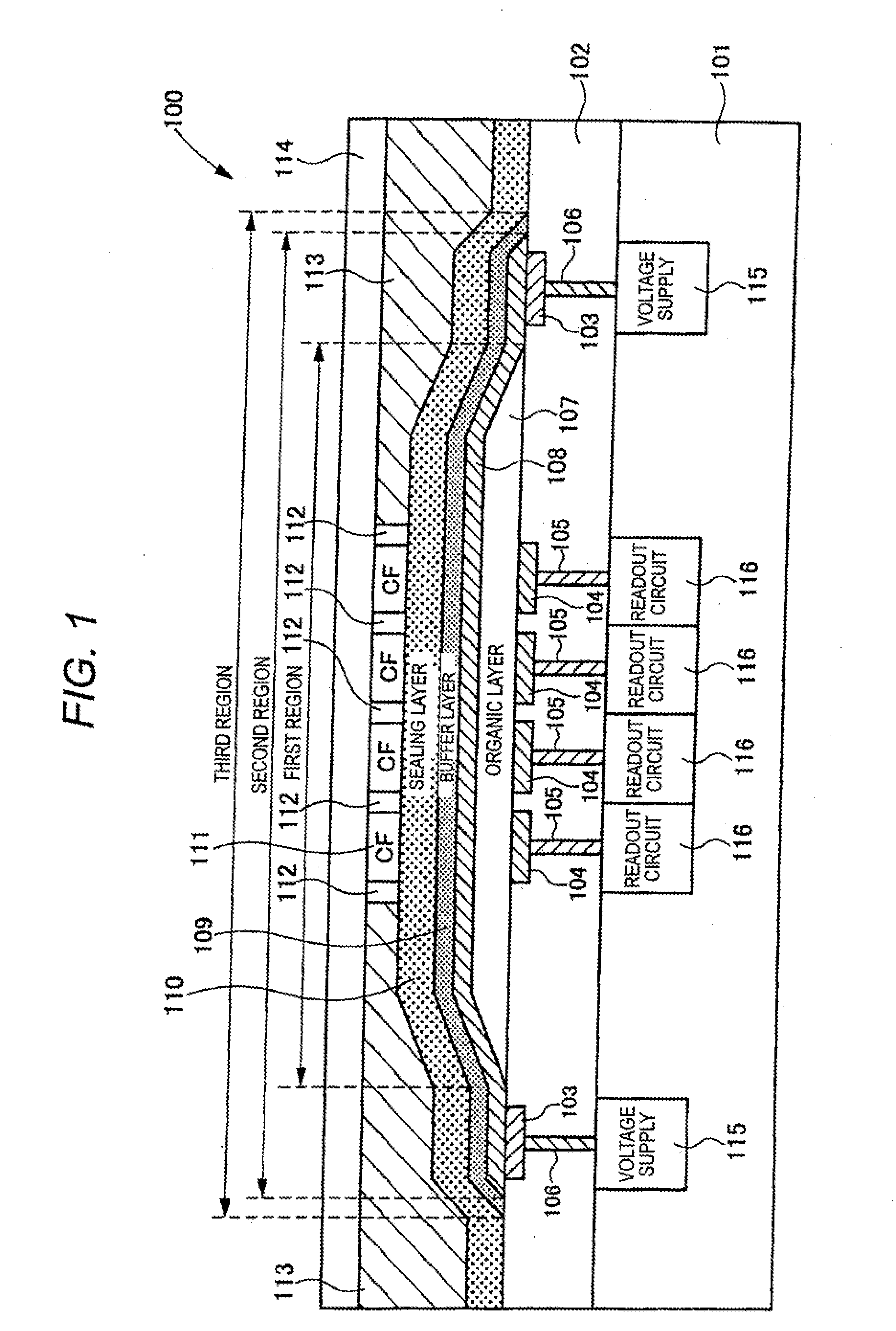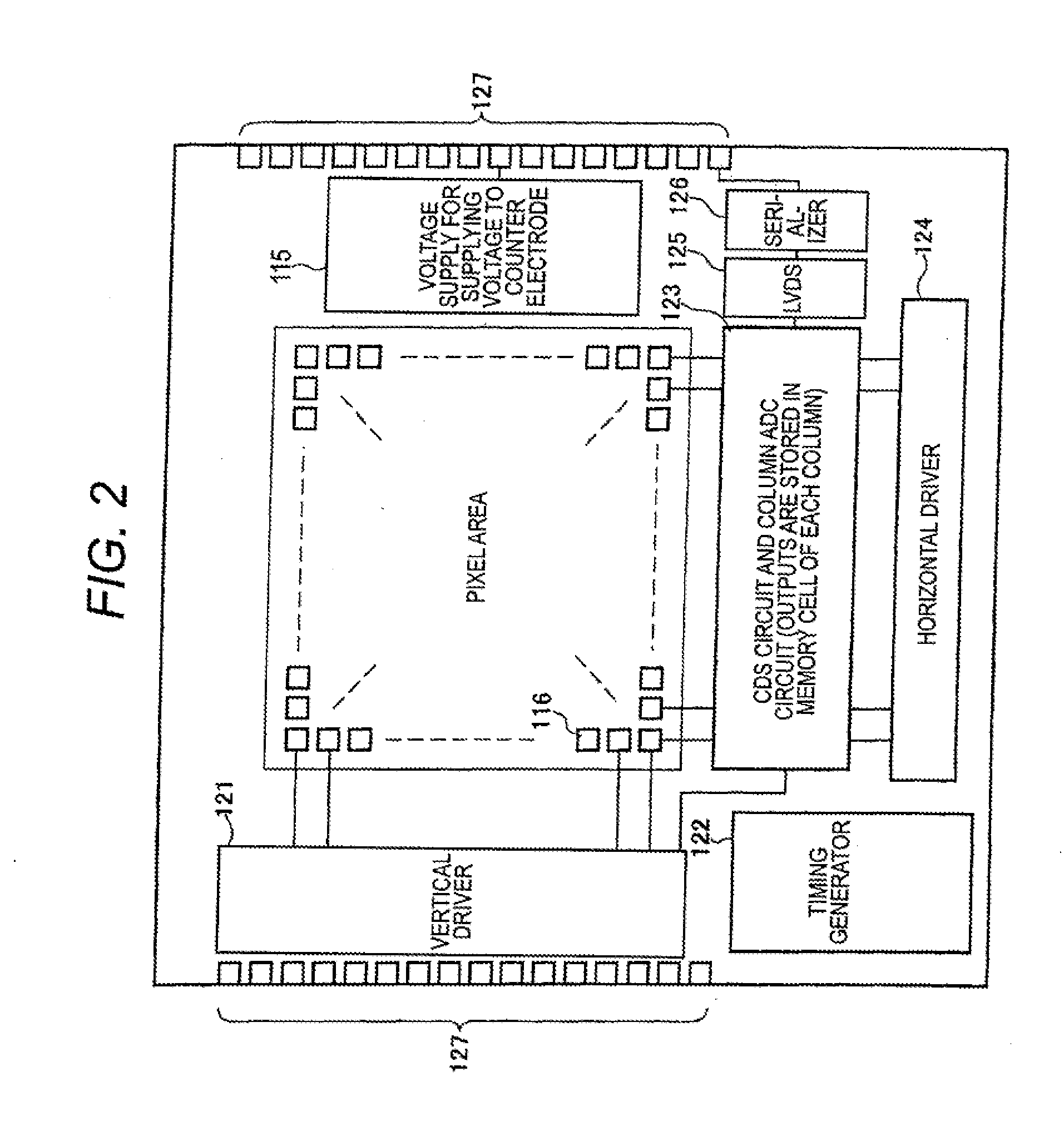Solid-state imaging device, process of making solid state imaging device, digital still camera, digital video camera, mobile phone, and endoscope
a solid-state imaging and imaging device technology, applied in the field of solid-state imaging devices, can solve the problems of reducing the effective area of the photodiode, reducing the aperture ratio, and reducing the pixel aperture ratio, so as to prevent color cross-talk between pixels and lower refractive index.
- Summary
- Abstract
- Description
- Claims
- Application Information
AI Technical Summary
Benefits of technology
Problems solved by technology
Method used
Image
Examples
example 1
[0271]A solid state imaging device having the structure of FIG. 53 was fabricated. Both the pixel electrodes 104 and the via plugs 105 were made of tungsten by the dual damascene process described supra. Specifically, TiN was sputtered as a barrier metal, followed by formation of a tungsten film by CVD, and the surface was planarized by CMP. The pixel electrodes 104 had a thickness of 300 nm and a generally square shape with a length and a width of 1.4 μm.
example 2
[0272]A solid state imaging device was fabricated in the same manner as in Example 1, except that the pixel electrodes 104 and the via plugs 105 were formed by first depositing a stack of tantalum nitride as barrier metal and copper by sputtering and then depositing a copper layer by plating, followed by planarization by CMP.
[0273]The results of characterization of the solid state imaging devices fabricated in Examples 1 and 2 are summarized in Table 1. The characteristics as referred to in these and other Examples were determined as follows.
(1) Level Difference A
[0274]The level difference A between the surface of the pikel electrode 104 and the surface of the dielectric layer between adjacent pixel electrodes 104 was obtained by observing a cross-section of the device under an electron microscope.
(2) Δ1 and Δ2
[0275]The difference Δ1 between the electron affinity Ea of the organic n type semiconductor (C60) and the ionization potential Ip of the charge blocking layer 15a and the dif...
example 3
[0278]Solid state imaging devices having a varied level difference A were fabricated in the same manner as in Example 1, except that the pixel electrodes 104 were formed by the above described trench isolation technique. Specifically, a TiN (thickness: 30 nm) was deposited by CVD on the dielectric layer 102 and the via plugs 105 previously formed by the standard CMOS image sensor processes. The TiN layer was patterned by the CMOS image sensor processes to leave arrays of generally square shaped TiN layer with a length and a width of 1.4 μm. The same dielectric material as the dielectric layer 102 was deposited on the dielectric layer 102 and the TiN layer. Finally, the deposited dielectric layer was planarized, by CMP until the top surface of the TiN layer (pixel electrodes 104) was exposed. The time of CMP was varied to result in different level difference A among the devices.
PUM
 Login to View More
Login to View More Abstract
Description
Claims
Application Information
 Login to View More
Login to View More - R&D
- Intellectual Property
- Life Sciences
- Materials
- Tech Scout
- Unparalleled Data Quality
- Higher Quality Content
- 60% Fewer Hallucinations
Browse by: Latest US Patents, China's latest patents, Technical Efficacy Thesaurus, Application Domain, Technology Topic, Popular Technical Reports.
© 2025 PatSnap. All rights reserved.Legal|Privacy policy|Modern Slavery Act Transparency Statement|Sitemap|About US| Contact US: help@patsnap.com



